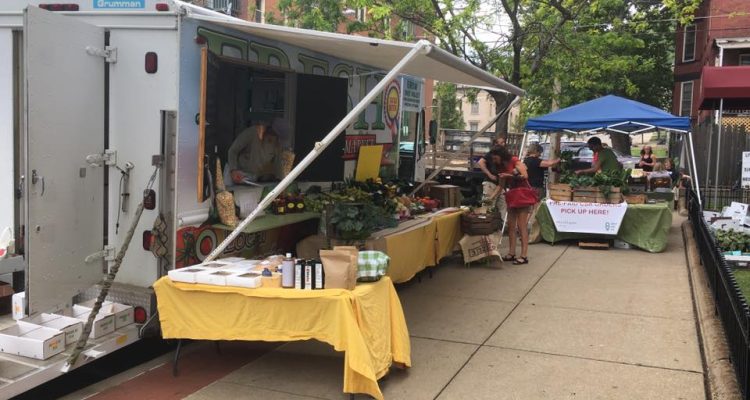As soon as a vegetable is picked from its vine, it begins to lose nutritional value, and those foods are not sold with a “Born on” date, either.
Google it – “Are fresh or frozen vegetables healthier for you?”
Or you can just ask Grow Ohio Valley’s Danny Swann, the head of the locally grown food initiative in the Wheeling area.
“The longer any vegetable has been removed from its vine, it loses nutritional value, and who knows how long the vegetables have been sitting before you buy them,” said Swann. “But when you buy our vegetables, you can know that they’ve been picked the day before or the day before that. It’s not long at all.
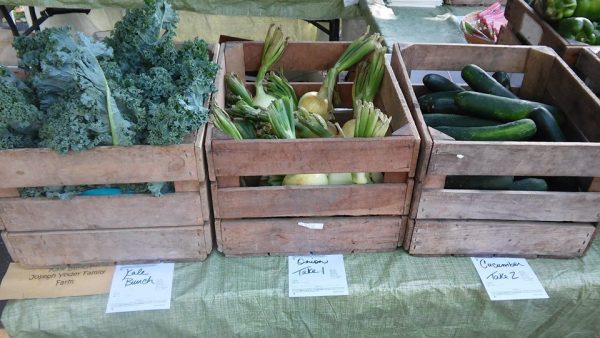
“Is there anything better tasting than a tomato that’s picked from its plant and immediately eaten? That’s because it’s full of every nutrient tomatoes contain, and that’s a bunch of Vitamin C, a lot of potassium, and a great source of dietary fiber,” he continued. “There so much goodness in everything we have at our markets, so we’re hoping that more and more people open themselves up to something they probably aren’t used to.”
Grow Ohio Valley is now in its fourth year, and each week employees and volunteers operate its mobile market at a plethora of locations in Ohio and Marshall counties four days per week. Each Thursday from 10 a.m.– 3 p.m. the mobile market rests outside Wheeling Health Right at 61 29th Street as a part of the organization’s “FARM-acy” initiative.
“The folks with Wheeling Health Right are very excited and very enthusiastic about this program, and they are great partners because they get it. They understand it,” said Grow Ohio Valley’s executive director Ken Peralta. “Even before we started talking with them in the spring, they were already encouraging their patients to eat locally grown fruits and vegetables.
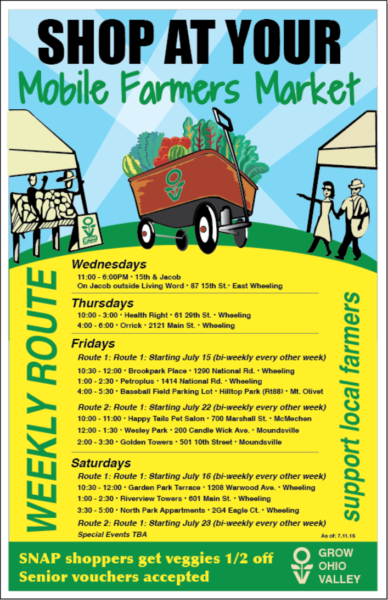
“It’s a great program we have with them because the doctors are writing prescriptions for vegetables, and they have 35 people who have signed up to participate each Thursday,” he explained. “That number could have easily doubled, but their budget had enough for the 35 folks, so that where we have started.”
The program includes two rounds of lab tests, including one before the individuals began visiting the Grow OV’s weekly farm stand and another round at the end of the program in the fall.
“We are very excited about that because we will have data to analyze,” Peralta said. “The labs will show the health indicators before and after, and that will allow everyone to see for themselves the differences this program has made on those lives. The data will show what it shows, and I think, just from my own personal experiences, you can really change your diet in a meaningful way, and in two weeks’ time feel very different.
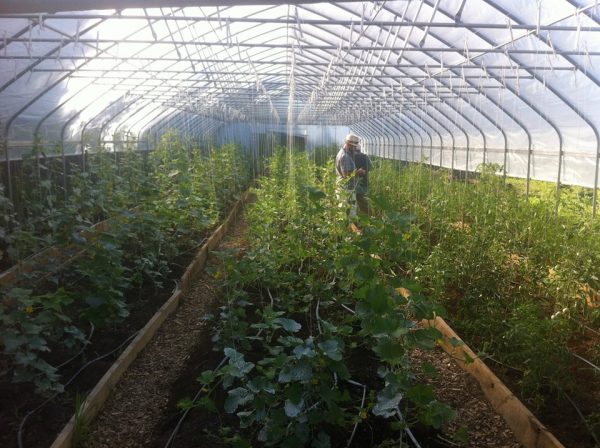
“Anyone can do that test, and that’s one of the parts of all this that continues to motivate me to keep doing what we are doing. It’s all about more and more people to eat healthier and then live healthier,” he said. “Maybe over time we can get West Virginia off of those lists about our bad overall health, and we can reduce the health care costs in the state, too, because a huge part of those costs have everything to do with what we are eating.”
Grow Ohio Valley’s market schedule will continue through October, and in the fall the non-profit organization will initiate a new program for those who feel they do not have the adequate time to prepare healthy meals for themselves and their families. It is called, “Dinner in a Snap,” and it will future local chefs and extend two months.
“We are hoping to get a lot of single mothers or grandparents that are raising children who may not have a lot of time to prepare healthy meals during the week,” Peralta reported. “We’re going to have guest chefs once a week for eight weeks, and they will show those who attend how to prepare three different crock pot meals.
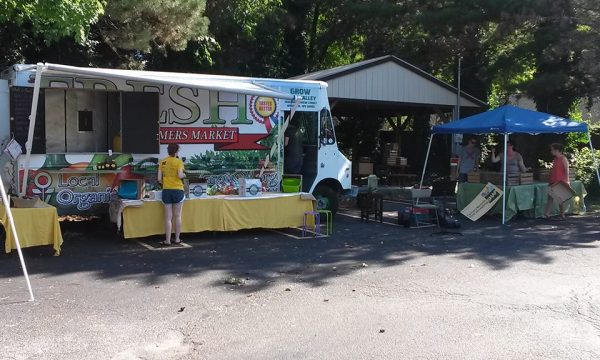
“So they will all chop the ingredients together and figure out the spices, and then it will all go into large freezer bags for the people to take home,” he said. “They will all have three different meals in the freezer bags and a crock pot so they can go home and make those meals. In some cases, those meals will get those families through a good part of the week, and they will learn how to prepare them for the future.”
Peralta relies on his own life experiences when explaining how he feels about locally grown food as opposed to what can be purchased at a common grocery store.
“In my personal life it was a big, ‘A-HA’ moment when I realized the relationship between the quality of my life experience and what I am eating. Since that time I have done a lot of research, and it is a fact that fresh, local vegetables have a higher level of nutrients than what is purchased the conventional way,” he explained. “There are three factors that go into that.
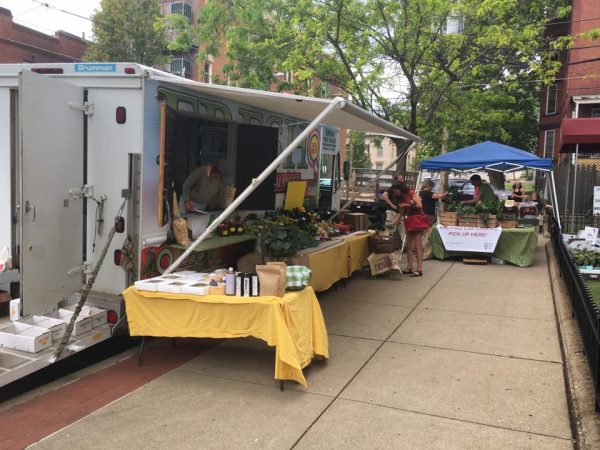
“First, there is the shipping of the vegetables that can be found with conventional agriculture, and many nutritional compounds are volatile, and they diminish with time. Second, factory agriculture is producing very differently these days than they were in the past. They may grow faster and grow bigger, but that’s at the expense of the vitamin and mineral content,” he continued. “And the final thing, and this is something I didn’t even realize until recently, is that over the last 50 to 60 years there’s been a serious depletion of top soil, and that means the soil doesn’t have as many nutrients as it used to. That’s a big deal.”
The debate concerning organic and non-organic vegetables is also on Peralta’s radar because of the genetic modifications that are made by the factory-farmer industry.
“It’s basically taking foreign DNA and injecting it into the plants to quicken the growing process, and there is a wide array of opinions about that,” he said. “But if you look at what’s taken place with the overall health of our country and when the GMOs started to be used, you can see a correlation between health and what we have been eating.
“I know that debate will continue, but for me, if it looks like a horse and it sounds like a horse, it’s probably a horse,” Peralta said. “We’re talking about our own biological destinies, and it’s my belief that we are under assault by the food systems in place today.”
(Photos made available by Grow Ohio Valley)


